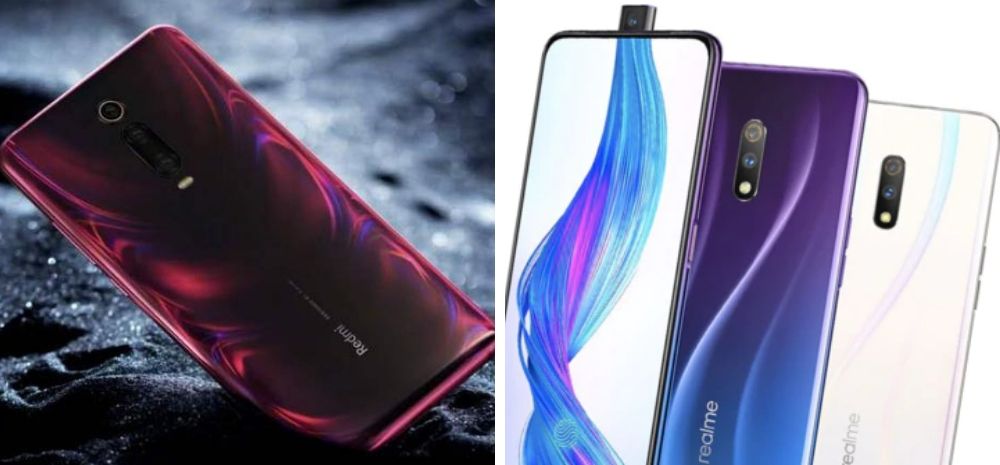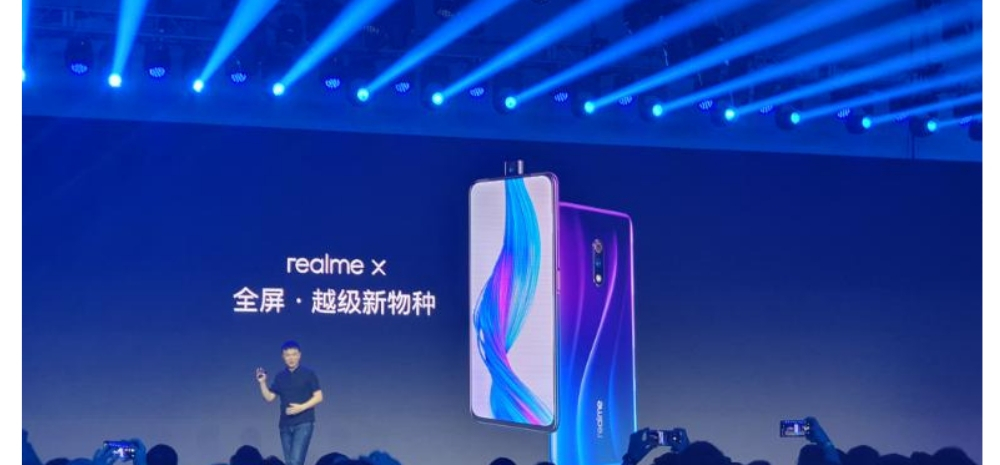Redmi K20 vs Realme X: The Grand Battle Under Rs 20,000
Xiaomi surprised all with a new flagship series under its freshly separated Redmi brand, Redmi K20 series. It consists of two devices, a regular Redmi K20 and an upgraded Pro model, Redmi K20 Pro, much similar to the current OnePlus 7 series smartphones.
Today, we will discuss about the regular K20, and not the Pro model.

While the reasons seem to be quite interesting, the regular Redmi K20 was a very strategic launch from Xiaomi. The company previously was going to launch a single top-end model, but later chose to go with two smartphones under a flagship series.
One of the primary reasons being Realme. Not the whole company, but its recent portfolio of smartphones. Both Realme X Lite (aka Realme 3 Pro) and Realme X pose a huge threat to Xiaomi in both China and India, especially Realme X.
While Xiaomi has Redmi Note 7 Pro to take on Realme 3 Pro (the Chinese Realme X Lite), it had no smartphone to match up Realme X.

And there comes in why the company chose to launch a toned-down regular Redmi K20 alongside Redmi K20 Pro.
Realme X will soon launch in India at a very aggressive price in the mid-range segment. Till now it had no competition in terms of the features it was going to offer in that range. But with Xiaomi now bringing in Redmi K20, it will no more be a cakewalk for Realme X, in both India and China
Interestingly both the smartphones, Redmi K20 and Realme X come with some of the very-first features in the entry mid-range segment, and it’s going to be an interesting price war now.
While Realme 3 Pro is fighting hard Redmi Note 7 Pro in India, soon we will have two super-budget flagships fighting it out in the sub-20,000 segment, the Realme X and Redmi K20.

Do note, currently, there are no smartphones available in India who offer a pop-up sensor, notchless AMOLED display, in-display fingerprint sensor, 48MP Sony sensor and fast charging all together at under 20,000 rupees.
Realme X and Redmi K20 are soon going to change everything in the Indian smartphone market in the mid-range segment.
Both being very similar nature, today we are going an in-depth strategic comparison between the upcoming Realme X and Redmi K20 to find out who’s on the edge. We have divided the primary categories into six sections: design and build, display, hardware, software, camera, battery and pricing.
Let’s begin.
Contents
Design & Build
Realme X comes with a polycarbonate body on the out, made to look like glass. It’s quite light and also feels premium in the hand. They have gradient finish on the out with some highlighting colour combinations, made out of high-quality plastic. The colour scheme and gradient style seem poppy.
Both Realme X and Redmi K20 come with a pop-up sensor without any notch. The rear camera module on both the smartphones sits at the centre without any physical fingerprint sensor.

Both the Realme and Redmi mid-range flagships come with an in-display fingerprint sensor.
Coming to Redmi K20, the smartphones come with a mix of glass and metal with a 3D gradient finish at the back with curved sides at back for firm gripping.
Both are comfortable, the build quality is good and is perfectly made.
Display
Redmi K20 Pro features a 6.39-inch Full HD+ AMOLED display without any notch in a 19.5:9 aspect ratio with 600 nits of maximum brightness with support for HDR content. In comparison, Realme X features a 6.53-inch full-screen AMOLED display, again without any notch.
Both displays are quite vibrant with minimal bezels on the sides with a little chin down under and an in-display optical fingerprint scanner. Plus, the AMOLED helps with the best of darks.
Realme X and Redmi K20 share a similar screen resolution of 2340×1080 pixels with Corning Gorilla Glass 5 protection on top.
The Redmi K20 pop-up camera is protected by sapphire, as claimed by the company to be wear-resistant and scratch-resistant.
Hardware & Storage
Realme X runs on the same entry-flagship Snapdragon 710 chip as Realme 3 Pro with up to 8GB of RAM. Based on a 10nm architecture, the Snapdragon SoC offers top-level performance on a budget.
In comparison, Redmi K20 comes with the newly launched Snapdragon 730 chipset with up to 8GB of RAM. It is closer to the previous flagship Snapdragon 835 chip in terms of performance.
Both the smartphones share the same Adreno 616 GPU for graphics.
Redmi K20 and Realme X share two similar storage configurations: 6GB RAM with 64GB storage and 8GB RAM with 128GB storage. Realme X has an additional 4GB RAM/64GB storage base model.

In terms of daily performance, both Redmi K20 and Realme X can run mid-end games with ease along with extensive multitasking. There won’t be any noticeable difference in daily use.
Realme packs in dedicated HyperBoost and GameBoost to offer an enhanced gaming experience.
Similarly, Xiaomi has added an 8 layer liquid cooling system to keep the phone cool during extended gaming sessions. There’s also a three dimension double-sided cooling graphite architecture with special Game Turbo 2.0 mode to optimize the smartphone for gaming.
On paper, Redmi K20 will have a definite advantage over Realme X with the added features and an improved chip. There won’t be any big difference, but Redmi K20 has an edge here over Realme X.
Software
Realme X runs on the same new Color OS 6 UI. The newly improved UI does offer some refreshing features compared to the previous OS with an easy-to-use overall structure and few tweaks. It’s a big upgrade over the last generation Color OS.
Based on the latest Android 9 Pie, the new ColorOS 6 UI packs in a bunch of user-friendly features and functions.
On the other hand, Redmi K20 comes with the latest MIUI 10 based on the same Android 9 Pie. The smartphone also has priority access to the Android Q beta program, unlike Realme X.
But again, the MIUI is loaded with irritating system and in-mobile ads.
Camera
Realme X comes with a dual camera setup at the back featuring the 48MP Sony IMX 586 rear sensor with an f/1.7 aperture clubbed with a secondary 5MP depth sensor with f/2.4 aperture. It’s the same primary sensor currently being used on OnePlus 7 Pro.
In comparison, Redmi K20 features a triple camera setup.
Redmi K20 Pro has the 48MP Sony IMX 582 (not the IMX 586) camera as the primary lens with an f/1.75 aperture coupled with an 8MP telephoto secondary sensor with an f/2.4 aperture and a tertiary 13MP wide-angle sensor with an f/2.5 aperture and a 124.8-degree field of view.
Realme X has a motorised pop-up 16MP selfie sensor with an f/2.0 aperture, again the same Sony IMX 471 sensor used in OnePlus 7 Pro.
Redmi K20 Pro and Redmi K20 both share the same 20MP sensor upfront supporting wide-angle shots
Both Redmi K20 and Realme X do a fair job offering a great dynamic range with almost accurate colours irrespective of lighting conditions. Though, Redmi K20 has an edge over Realme X in some areas.
Both support Google Camera and has a dedicated Night Mode for long-exposed shots.
Redmi K20 with an additional ultra wide lens does have an added advantage over Realme X in terms of overall photography. Though, the difference between the 48MP Sony IMX 586 and IMX 582 isn’t much significant.
In all, both do a great job, but Redmi K20 will have a slight edge.
Battery
Realme X is backed by a 3,765 mAh battery supporting Type-C USB powered 20W VOOC 3.0 fast charging support. It can juice up Realme X from 0 to 100 per cent under 75 minutes.
On the other hand, Redmi K20 houses a slightly larger 4,000 mAh battery backed by AI smart optimization to extend the phone’s battery to last longer supporting 18W fast charging technology. The charge time may vary from 90 to 100 minutes.
Both the smartphones ship with the fast charger inside the box.
Pricing & India Launch
Realme X has been launched in three versions in China: the base model with 4GB RAM and 64GB storage costs Yuan 1,499 (around Rs 15,000). The mid-end model with 6GB RAM and 64GB storage costs Yuan 1,599 (around Rs 16,000).
Finally, the top-end model with 8GB RAM and 128GB storage costs Yuan 1,799 (around Rs 18,000) in China.
In India, the Realme X will cost higher.
The company has confirmed the launch, but are yet to reveal the India launch date and prices.
Realme will certainly target the sub-20,000 segment with the upcoming budget flagship to expand its portfolio.
The base model with 4GB RAM and 64GB storage may come at Rs 16,999 in India. The mid-end model will probably cost Rs 18,999 with 6GB RAM and 128GB storage, and finally Rs 20,999 for top model with 8GB RAM and 128GB storage in the country.
These are estimated prices, Realme is yet to announce the official prices.
Redmi K20 has been launched in two variants in China. The base variant comes with 6GB RAM and 64GB storage costing 1,999 Yuan (around Rs 20,100). The top-end variant with 6GB RAM and 128GB storage costs 2,099 Yuan (around Rs 21,100).
The Redmi K20 India price will start somewhere below Rs 20,000 in India, or maybe even low.
Xiaomi India has already confirmed the launch of the Redmi K20 smartphones in India. While the official date has not been announced yet, the India launch should happen sometime in June.
We expect the base model of Redmi K20 with 6GB RAM and 64GB storage to cost Rs 19,999 in India, while the top-model with 8GB RAM and 128GB storage may cost Rs 21,999 in the country.
CONCLUSION: The Best Smartphone Under Rs 20,000?
Backed by flagship-level features and specs, both Redmi K20 and Realme X seems to have everything you would like to have on a top flagship. And most importantly, both Redmi and Realme have it all for you at a very budget-friendly price.
Redmi K20 has slightly better features compared to Realme X, but the base prices will differ as well.
Realme X will probably cost 1,000 to 2,000 rupees cheaper compared to Redmi K20. The new Redmi flagship will have an upper hand, but again, the respective prices will justify each in their own categories.
The good news is that consumers can now enjoy top-rated flagship features as pop-up sensors, in-display fingerprint sensors, notch-less display and such more at budget-friendly prices.
Both Redmi K20 and Realme X are yet to launch in India, and we soon will get to see a new price war at under 20,000 rupees in the country among some of the best smartphones.
Stay tuned for more!

Comments are closed, but trackbacks and pingbacks are open.